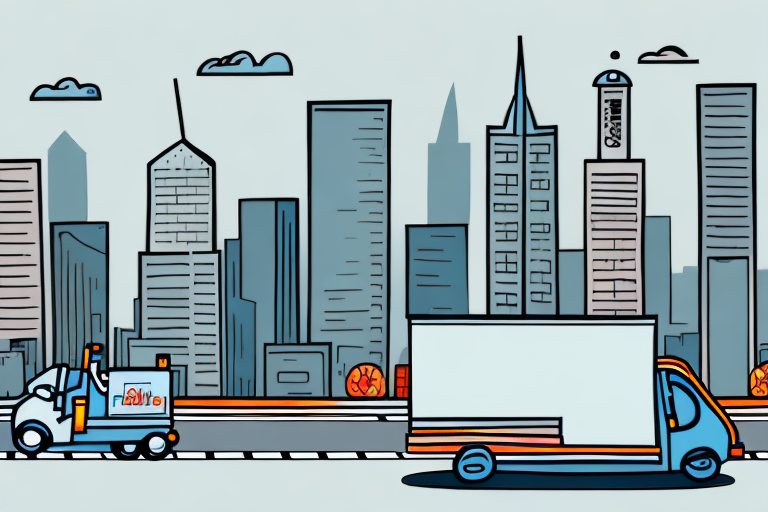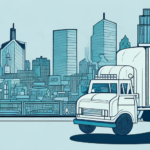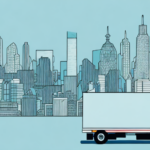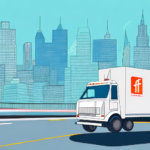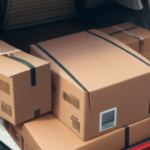Unlocking the Potential of Last-Mile Logistics
As e-commerce continues to surge and consumer expectations for fast and convenient delivery grow, last-mile logistics has emerged as a critical aspect of the supply chain. The last mile refers to the final leg of the delivery process, from the distribution center to the customer's doorstep. A successful last-mile delivery requires efficient coordination, timely delivery, and a positive customer experience. In this article, we will explore the importance of last-mile logistics, the challenges that companies face, and how technology and data analytics are playing a crucial role in driving efficiency and sustainability.
The Importance of Last-Mile Logistics for Businesses
Last-mile logistics is a critical factor in the success of any business that relies on the timely and efficient delivery of goods to customers. It directly impacts customer satisfaction, loyalty, and repeat business. According to a Forbes survey, 96% of customers consider delivery an important factor in their online shopping experience. Furthermore, 49% of customers stated they would shop more often with a retailer offering same-day delivery, while 25% would abandon their cart if such an option was unavailable.
The significance of last-mile logistics extends beyond e-commerce to industries like healthcare, food delivery, and parcel delivery. In healthcare, efficient last-mile delivery ensures the timely and safe delivery of medications and medical equipment to patients. In food delivery, it guarantees that meals arrive warm and fresh. Parcel delivery services rely on effective last-mile strategies to ensure on-time package delivery.
Additionally, last-mile logistics has a substantial environmental impact. The increase in delivery vehicles contributes to traffic congestion and air pollution. Businesses prioritizing sustainable last-mile logistics—such as utilizing electric vehicles or optimizing delivery routes—not only reduce their carbon footprint but also attract environmentally conscious consumers.
Challenges in Last-Mile Logistics
Despite its importance, last-mile logistics presents several challenges:
- Traffic Congestion: Urban areas often experience heavy traffic, causing delays and missed deliveries.
- Weather Conditions: Adverse weather like heavy rain or snow can disrupt delivery schedules and impact safety.
- Remote Deliveries: Delivering to remote or difficult terrains increases delivery times and costs.
- Customer Expectations: Balancing fast delivery with cost-effectiveness can be challenging.
- Theft and Security: Packages and delivery vehicles are susceptible to theft, especially in high-crime areas.
- Impact of Pandemics: Events like the COVID-19 pandemic exacerbate delivery demands and necessitate safety measures.
To overcome these challenges, companies are adopting various strategies:
- Route Optimization: Utilizing software to navigate traffic and identify the most efficient delivery routes.
- Real-Time Tracking: Implementing tools that allow companies to monitor delivery progress and adjust routes as needed.
- Innovative Delivery Methods: Exploring drones and autonomous vehicles for deliveries in challenging areas.
- Collaborative Partnerships: Pooling resources with other logistics providers to share delivery networks and reduce costs.
- Enhanced Security Measures: Employing GPS tracking, tamper-evident packaging, and secure delivery lockers to prevent theft.
Technology Solutions Enhancing Last-Mile Logistics
Technology plays a pivotal role in optimizing last-mile logistics:
- Route Optimization Software: Helps drivers identify the most efficient paths, reducing delivery times and fuel consumption.
- Real-Time Tracking Systems: Provide visibility into delivery progress, allowing for dynamic adjustments.
- Mobile Applications: Enable communication between drivers and customers, capture signatures, and gather feedback.
- Internet of Things (IoT) Devices: Monitor goods throughout the delivery process, ensuring real-time visibility and alerting companies to any issues.
- Artificial Intelligence (AI) and Machine Learning: Power chatbots for customer service and analyze data to predict delivery preferences and optimize routes.
- Blockchain Technology: Ensures secure and transparent tracking of goods, reducing the risk of fraud and streamlining payment processes.
For example, companies like Amazon have heavily invested in drones and autonomous delivery vehicles to enhance efficiency and reduce delivery times.
The Role of Data Analytics in Last-Mile Optimization
Data analytics is essential for optimizing last-mile logistics. By analyzing data from sensors, GPS devices, and other sources, companies can:
- Optimize Delivery Routes: Identify the most efficient paths based on historical traffic data and delivery patterns.
- Identify Inefficiencies: Detect underperforming drivers or bottlenecks in the delivery process.
- Manage Exceptions: Quickly respond to issues like missed deliveries or changes in delivery instructions using real-time data.
- Enhance Customer Satisfaction: Analyze customer feedback to improve the delivery experience, such as reducing wait times or offering more flexible delivery options.
- Inventory Management: Optimize inventory levels by analyzing product demand and delivery times, reducing costs associated with overstocking or stockouts.
According to a report by McKinsey & Company, companies leveraging data analytics in their last-mile operations can achieve up to a 20% reduction in delivery costs.
Sustainability in Last-Mile Logistics
Addressing the environmental impact of last-mile logistics is increasingly important. Strategies include:
- Electric and Hybrid Vehicles: Reducing emissions by transitioning to greener delivery vehicles.
- Alternative Delivery Methods: Utilizing bike couriers or micro-fulfillment centers in urban areas to minimize travel distances.
- Reusable Packaging: Implementing packaging solutions that can be reused or recycled to cut down on waste.
- Optimized Delivery Routes: Minimizing fuel consumption and emissions through efficient route planning.
Companies like DHL are leading the way by integrating electric vehicles into their delivery fleets and establishing sustainable delivery hubs.
Emerging Trends and Innovations in Last-Mile Logistics
The last-mile logistics industry is continually evolving with several emerging trends:
- On-Demand Delivery Services: Allowing customers to receive goods within hours, enhancing convenience and satisfaction.
- Shared Mobility Solutions: Sharing delivery networks and resources to reduce costs and improve efficiency.
- Drones and Autonomous Vehicles: Exploring the use of unmanned aerial vehicles and self-driving cars to expedite deliveries, especially in hard-to-reach areas.
- Smart Lockers and Pickup Points: Providing alternative delivery locations where customers can conveniently collect their packages.
- Artificial Intelligence: Enhancing predictive analytics, customer service, and operational efficiency through AI-driven solutions.
For instance, Walmart is testing drone deliveries in select areas to reduce delivery times and improve service reliability.
Best Practices for Efficient Last-Mile Delivery
To achieve efficient and effective last-mile delivery, companies should adopt the following best practices:
- Invest in Technology: Utilize route optimization, real-time tracking, and mobile applications to streamline operations.
- Collaborate with Partners: Work with other logistics providers to share resources and expand delivery networks.
- Implement Sustainable Practices: Transition to electric vehicles and adopt reusable packaging to minimize environmental impact.
- Empower Drivers: Provide drivers with the necessary tools and information through mobile apps to enhance communication and service quality.
- Leverage Data Analytics: Use data insights to refine delivery routes, manage exceptions, and improve overall efficiency.
Case Studies: Successful Last-Mile Logistics Strategies
Several companies have successfully implemented last-mile logistics strategies to enhance their delivery operations:
- Amazon: Invested in drones, robots, and autonomous delivery vehicles to improve efficiency and reduce delivery times.
- Zara: Adopted a hybrid delivery model, utilizing both in-store and centralized fulfillment centers to optimize delivery routes.
- Domino's Pizza: Uses real-time tracking and visibility tools to provide customers with accurate delivery estimates, enhancing customer satisfaction.
Conclusion
Last-mile logistics is a critical aspect of the supply chain, and its importance will only continue to grow as e-commerce and customer expectations for fast and convenient delivery expand. Companies must focus on efficient and sustainable last-mile logistics strategies to meet these demands while balancing speed and cost-effectiveness. By leveraging technology solutions, data analytics, and collaborative partnerships, businesses can overcome the challenges of last-mile logistics and unlock its potential for success.













